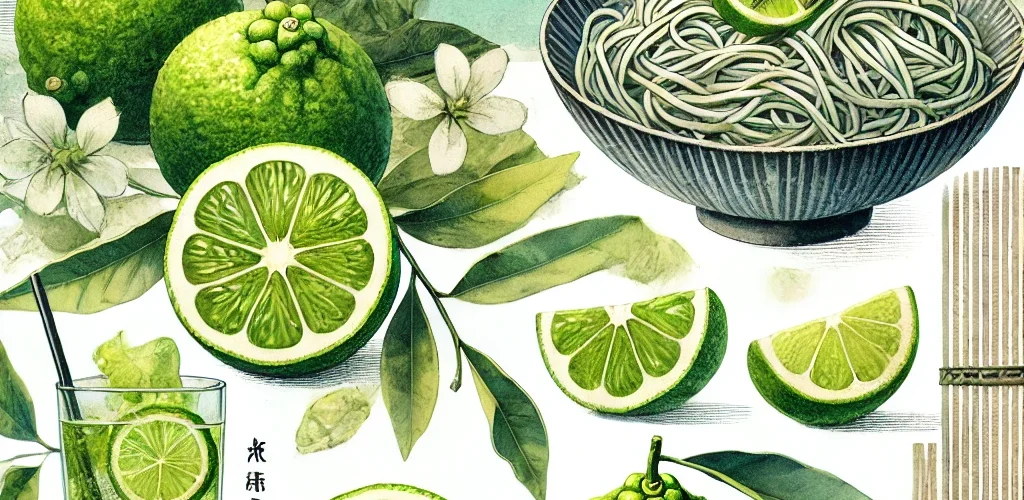Sudachi may be small in size, but its bold aroma and layered acidity are turning it into a culinary and cultural sensation. Native to Tokushima Prefecture on Japan’s Shikoku Island, this vibrant green citrus has seasoned traditional dishes for centuries. Now, as global food culture shifts toward authenticity, regional storytelling, and exotic flavor profiles, Sudachi is making its way onto restaurant menus and into social media feeds worldwide. For chefs, it represents a rare and exclusive ingredient. For content creators, it is a visual and narrative treasure trove that sparks curiosity and engagement. In the emerging wave of niche food trends, Sudachi is uniquely positioned to shine.
| Aspect | Details |
|---|---|
| Trend Name | Sudachi – Japanese green citrus |
| Key Components | Juice and zest of Sudachi fruit |
| Spread | Japan (especially Tokushima); now appearing in global fine dining & content |
| Examples | Upscale Japanese cuisine, fusion dishes, cocktails |
| Social Media | #sudachi #japanesecitrus #foodietrends #tokushimaspecialty |
| Demographics | Foodies, chefs, Gen Z & millennial creators, gourmet travelers |
| Wow Factor | Aromatic acidity more complex than lime or lemon |
| Trend Phase | Emerging |
Tradition in Tokushima
Sudachi has deep cultural roots in Japan, where it has long been cherished as a seasonal citrus. Grown primarily in Tokushima Prefecture, the fruit is harvested between August and October, when it is still green and slightly unripe, maximizing its tangy punch. For centuries, Sudachi has been used to season grilled fish, soba noodles, and sashimi, offering a sharp counterbalance to rich flavors. Unlike its citrus cousins, it is not eaten whole but valued for its juice, which delivers a sharp, fragrant acidity with subtle herbal notes. According to Discover Tokushima, the fruit is considered an essential taste of the region and a symbol of seasonal authenticity.
Flavor and Culinary Potential
What sets Sudachi apart is its complexity. Its acidity is more nuanced than lime or lemon, offering hints of spice and an aromatic finish that chefs describe as “layered sourness.” This unique profile makes it versatile in both traditional and modern culinary applications. In Japanese cuisine, Sudachi is squeezed over grilled ayu (sweetfish) or used to cut through the richness of hotpot dishes. Outside Japan, chefs experimenting with Sudachi find it ideal for marinades, salad dressings, ceviche, and even desserts that benefit from a bright yet sophisticated acidic note. As The Japan Times reported, Sudachi’s rise coincides with a growing global appetite for distinctive citrus flavors that move beyond the familiar.
From Fine Dining to Mixology
While content creators have embraced Sudachi’s story, fine dining remains a crucial platform for its rise. The fruit’s rarity and seasonality make it attractive to chefs looking to add exclusivity and provenance to their menus. High-end restaurants highlight Sudachi in dish descriptions, signaling sophistication and cultural depth. Mixologists, too, are adopting the fruit as an alternative to lime, creating Japanese-inflected versions of margaritas, sours, and highballs. The result is cocktails that feel both familiar and exotic, balancing acidity with narrative appeal. The luxury factor is reinforced by limited availability, positioning Sudachi as a citrus that cannot be found just anywhere.
Sudachi in the Social Media Spotlight
For food creators, Sudachi is an ideal ingredient: niche, photogenic, and rich in storytelling value. Its small, bright-green form makes it visually striking in food styling, whether sliced open to reveal juicy pulp or squeezed over glistening sashimi. On Instagram and TikTok, creators leverage Sudachi to produce educational content that combines culinary exploration with cultural depth. Viewers are captivated not only by the look of the fruit but also by its role as a bridge between tradition and modern experimentation. This dynamic fits perfectly with social media’s preference for rare, “insider” ingredients that allow creators to position themselves as tastemakers.
Challenges and Opportunities
Sudachi’s biggest challenge is also its greatest strength: scarcity. Its short harvest season and regional production mean it will never flood global markets like lemons or limes. But in today’s trend-driven food culture, exclusivity fuels desire. For chefs, the limited supply reinforces Sudachi’s luxury positioning. For creators, its obscurity outside Japan makes it a powerful storytelling tool. As Food Business News notes in a broader look at Japanese ingredients, regional authenticity is increasingly prized in global food innovation. Sudachi fits this shift perfectly, offering not just flavor but cultural capital.
Outlook: A Citrus for the Future
Sudachi is not a fleeting novelty. Its rise aligns with long-term consumer trends toward authenticity, niche discovery, and layered flavor experiences. While logistical constraints will likely prevent it from becoming a mainstream supermarket staple, that is precisely what cements its role in fine dining and digital food culture. Expect to see Sudachi feature more prominently in creator-driven content, boutique product launches, and curated menus. For those who want to stay ahead of the curve in food trends, this little green citrus is more than garnish—it is a symbol of where global gastronomy and digital storytelling converge.

